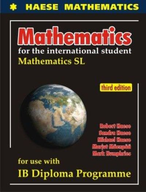Bag C contains 4 blue and 1 yellow ticket. Bag D contains 2 blue and 3 yellow tickets
Chapter 25, Problem 48(choose chapter or problem)
Bag C contains 4 blue and 1 yellow ticket. Bag D contains 2 blue and 3 yellow tickets. An ordinary 6-sided die is used to select one of the two bags. If a 1 or 2 is rolled, bag C is chosen. Otherwise, bag D is chosen. A ticket is drawn at random from that bag. a Copy and complete the tree diagram, showing all probabilities. b Find the probability that a yellow ticket is drawn from bag D. c Find the probability of drawing a yellow ticket from either bag. d If a blue ticket is chosen, find the probability that it came from bag D. e In a gambling game, a player wins $6 for getting a blue ticket and $9 for getting a yellow one. Find the players expected return.
Unfortunately, we don't have that question answered yet. But you can get it answered in just 5 hours by Logging in or Becoming a subscriber.
Becoming a subscriber
Or look for another answer
